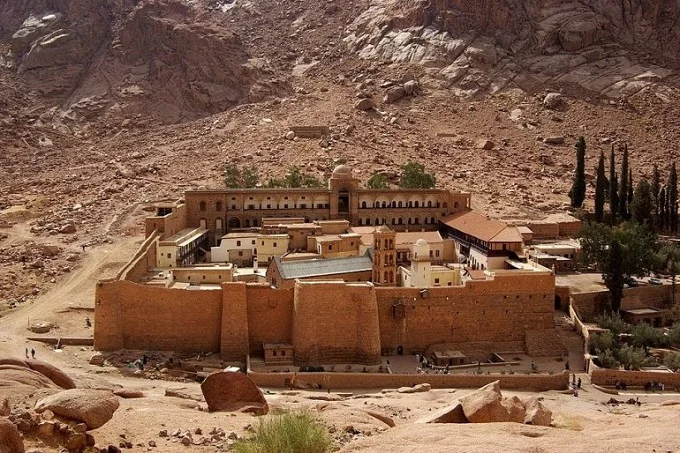The Monastery of Saint Catherine is located in Egypt’s Sinai Peninsula, in a desert environment with granite cliffs and steep rocks. Moses received the Ten Commandments from God here, at the foot of Mount Sinai. It’s only logical that Christians, Jews, and Muslims regard this area as sacrosanct.
It is unnecessary to pick out the Egyptian pyramids as one of Egypt’s most impressive sites. The East Roman Emperor Justinian the Great had a monastery dedicated to St. Catherine built on this location between 548 and 565.
In its existence, the monastery has never been destroyed or robbed, making it one of the world’s oldest operating Christian monasteries. It also has the world’s oldest permanent library, which houses the world’s second-largest collection of early codices and manuscripts in any language, behind the Vatican Library.
Emperor Justinian erected a large wall around the monastery in the sixth century. Until the twentieth century, the only way in was via a high entrance in the outside walls. Today, a smaller gate to the left of the main gate may be used to gain access.
The huge bush, which is claimed to represent the burning bush that Moses saw, is the holiest feature of the monastery. In the fourth century, Empress Helena, Constantine the Great’s mother, constructed the Neopalimaya Kupina Chapel here, which eventually became the monastery. Rubus Sanctus is a rare rose species from the rose family. The plant, which is native to the Sinai Peninsula, has a very lengthy life cycle.
The icons and mosaics on the walls, as well as the church structures and liturgical artifacts, are the monastery’s greatest asset, constituting the world’s finest collection of early icons. The majority of these symbols date back to the 6th century, with others dating back much farther.
Another notable value is the library of St. Catherine’s Monastery. The missing parts of the Codex Sinaiticus, a 4th-century manuscript copy of the Greek Bible; the Syriac Sinaiticus, a 4th-century manuscript of the four canonical New Testament gospels; and the Ashtinam of Muhammad, in which the Islamic Prophet Muhammad is said to have offered his protection to the monastery, are just a few of the rare manuscripts in its collection.
The library also has early editions of Homer (1488) and Plato (1513), as well as Aristophanes’ Comedies (1498), the Great Etymological Lexicon of Greek (1499), and the Lexicon of Suida (1499).
There are hundreds of religious sites in the area, including the Chapel of St. Catherine atop Mount Catherine, or the Rock of Moses, from which the Prophet Moses brought water, as well as several churches and hundreds of ruins of Byzantine monasteries, in addition to St. Catherine’s Monastery and Mount Sinai.
In 2002, the monastery was named a UNESCO World Heritage Site. Every year, it gets around 100,000 tourists.
